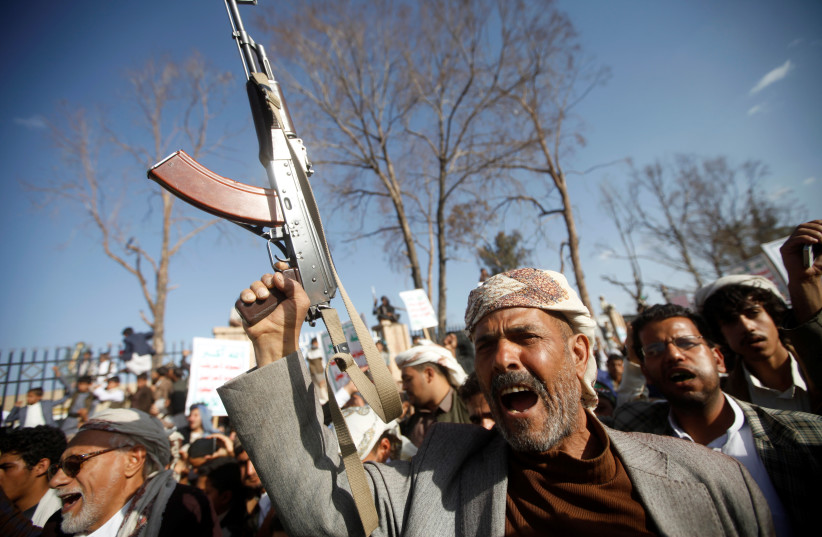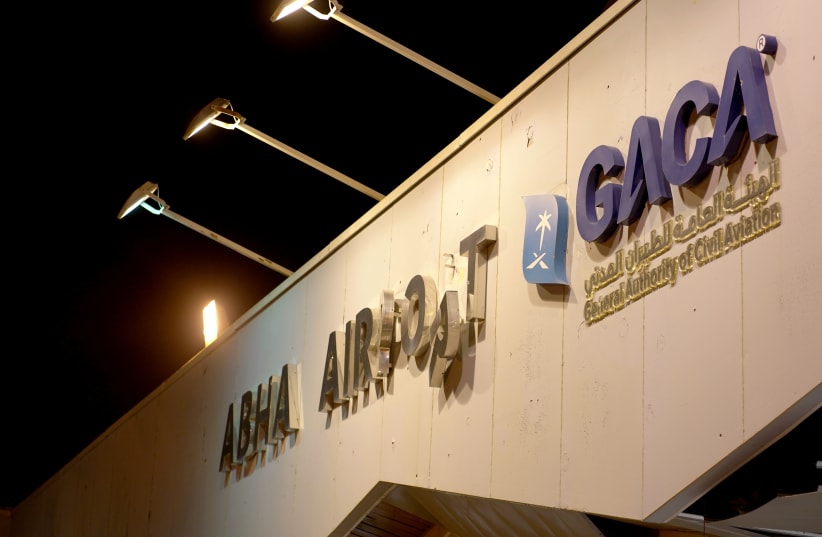The attack on the United Arab Emirates on Monday was meant to be a major warning from Iran to the UAE. It was an unprecedented attack on the UAE, although not an unprecedented attack in the region. Iran attack Saudi Arabia’s Abqaiq facility in September 2019 in a similar attack which was seen in the region as a major wake-up call. Iran has used drones and ballistic missiles increasingly in the region and trafficked the same technology to the Houthis, Hamas, Hezbollah and Hashd al-Shaabi militias in Iraq. The attack on the UAE killed three people. This is a major escalation by Iran and its Houthi proxies. However, the UAE will have to weigh its response because the message from Iran is that it has impunity to murder civilians in the UAE and knows it will face no consequences.
The attack by the Houthis is openly aimed at changing the “equation,” the Houthis said Monday. Iranian media emphasized this point. That means the Houthis are now saying they can strike at the Gulf state and move beyond their attacks on Saudi Arabia. The UAE may be more vulnerable because of their large expat population and the fact they are a major tourist destination.
The Houthis say the attack was “part of a legal and legitimate response and was carried out in response to the UAE's ongoing attacks and military actions against the Yemeni people.” The Houthis want the UAE to withdraw support from groups in Yemen. Saudi Arabia and the UAE entered Yemen in 2015 to support the government as the Houthi rebels appeared on the verge of taking Aden. Years later much has changed and Iran's backing for the Houthis put them on steroids. The Houthis warned the UAE for days and have also attacked a ship linked to the UAE. Meanwhile, Iran has been on a rampage in the Gulf of Oman as well, mining ships in 2019 and using drones to attack a tanker in July, killing two people. Iran also sends IRGC ships to the Red Sea to spy on the region.
Iran and the Houthis often mention Israel in their statements. The Houthis claim Israel is linked to the UAE and the Houthis official motto includes threats to destroy Israel. Iran is believed to have sent advanced drones to Yemen in 2020 that may be able to reach southern Israel. Iran has also attacked Israel using drones flown from Syria and Iraq.
The UAE said that the attack on Monday was a"heinous attack on civilian facilities" by Yemen's Houthi militia. Dr. Anwar Gargash, Special Adviser to the UAE President, described the group as a "terrorist militia" after two blasts in the capital, the National said. “Two Indians and a Pakistani died when a device hit three fuel trucks at Adnoc's petroleum storage unit in the ICAD industrial area of Mussaffah at about 10 a.m. Six people suffered mild to moderate injuries,” the report said. The UAE Ministry of Foreign Affairs and International Co-operation said in a statement that it "reserves the right to respond to these terrorist attacks and this sinister criminal escalation.”


The UAE has received widespread support in the region. However, the fact that Iran has attacked Saudi Arabia in the past, targeted Iraq’s Prime Minister, trafficked weapons illegally to Iraq, Syria, Yemen, Lebanon and Gaza, and carried out other attacks across thousands of miles of the Middle East, shows that no one in the international community will hold Iran or its proxies accountable. Iran hides behind groups like the Houthis, pretending that a “militia” carried out the attacks. But Iran’s IRGC likely helped plan the attack.
Statements about the attack appear to indicate this was a serious incident. It could have been far worse. It was also symbolic. It shows the reach of the Houthis and their Iranian backers. Etihad Airways, for instance, said there was limited disruption to flights. This means Iran and its proxies can shut down airports in the UAE and spread havoc. The US has an airbase in the UAE and there will be questions about why air defenses didn’t prevent the attack. Saudi Arabia has been searching for more air defenses to stem similar attacks.
In the coming days, we will learn more about the technology behind the attacks. If the attack involved drones, how did the drones avoid detection? Did they really come from the UAE, or was Iran directly responsible for this attack, as it was in the 2019 attack on Saudi Arabia? There will now be a need for the UAE to consider its retaliation and also for the UAE and its partners to look into increasing their defenses. The Gulf states already pay large sums for defense procurement. The UAE has recently signed a deal for French warplanes. It was weighing a deal for the US F-35 and drones. The UAE’s new relationship with Israel could have important implications in the wake of the attack as well. Israeli defense companies have signed deals in the UAE in the last year. One of the deals was related to countering UAVs. All of this means that when it comes to defending against Iran and Iranian-backed terrorist groups, the UAE and its friends across the region will have a lot to consider.
